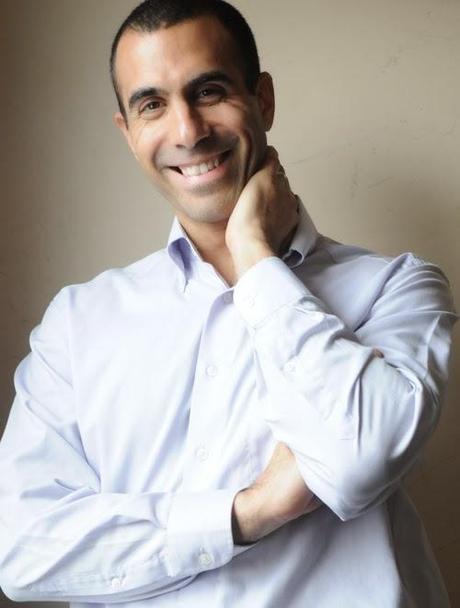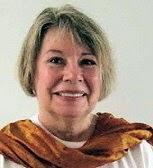by Lynn Somerstein, PhD, RYT, LP

Two Flowers in Conversation by Shitao
Stephen Lewis, LMHC, NCC, E-RYT and I became acquainted several years ago when we were introduced by a mutual friend, who knew we were both interested in yoga and psychotherapy. We’ve had many conversations since then about the effects yogic practice has on mental health, including its usefulness working with Bipolar Disorder. We’re both psychotherapists and yoga therapists in private practice in New York City, and we integrate mind-body techniques, especially yoga and mindfulness, into our psychotherapy work. We’re also both committed to promoting a wellness lifestyle and to removing the stigma often associated with mental health problems.Lynn: Steven, I began doing yoga over 50 years ago, when I was still in high school. I learned it from a book, since there were no yoga studios near where I lived, and I loved it right away. I was a jumpy teenager and it calmed me down. What first drew you to yoga?
Stephen: My journey started about 15 years ago. At that time and for the four years that followed, yoga was primarily a physical practice for me as well as one that helped me relax and feel centered.
Lynn: Yes, typically people are first drawn to yoga as a physical practice. I was, too. And then if you stick with it, things deepen.
Stephen: It was when I started practicing on a daily basis that I began to experience the more profoundly positive effects of yoga. In reading about the yogic lifestyle and yoga psychology I became excited by the idea of immersing myself in the practice of yoga.
Lynn: When I was in my twenties I started studying yoga at the Integral Yoga Institute, and forty years later I’m still immersed in advanced studies there. There is so much to learn!
Stephen: I went to the Kripalu Center for Yoga and Health, practicing seva (selfless service) as a karma yogi, and I noticed the transformative effects a holistic yoga lifestyle had on me and those around me. I became certified as a yoga instructor at Kripalu and then was drawn to travel to India, the birthplace of yoga. In Varanasi I felt called to integrate yoga and psychotherapy. When I returned to America, I took steps to do just that.
Lynn: I also felt a deep need to integrate yoga and psychotherapy. I found that the combination of the two has a calming, centering effect on people in my therapy practice—and on me, too! Among other things, yoga is about deep energy work. It is effective for people with anxiety, PTSD, and depression, and I think it can help people with Bipolar Disorder, although so far there is not much research on it.
Stephen: When it comes to scientific research, the jury is still out in regards to whether yoga can be helpful for those with Bipolar Disorder. As of this date, very few studies have been published on the question and those few leave much to be desired in terms of their quality.
Lynn: The International Association of Yoga Therapists has a small bibliography about yoga and BD. People with BD often need to take medication and always need to live a structured life as free from stress as possible, attend to nutrition, and get enough sleep and exercise. Psychotherapy helps, too. Clearly, a yogic lifestyle encourages a wellness approach by teaching people to have deep sensitivities to their needs, and giving them the means to meet their needs in healthy and appropriate ways.
Stephen: It’s important to concentrate on a calming, centering yoga practice.
Lynn: But sometimes neither yoga nor medication seem to work. For example, some years ago I worked with a young man with Bipolar Disorder. He was on medication but it was quite difficult to titrate, and he had many relapses, which is why he came to me for treatment. He said he was powerless in the face of his disease, and that he felt like a werewolf. We worked together for several months to try to ground and balance his energy using talk therapy, pranayama, and calming asana, but we weren’t successful. People often describe the “highs” that are associated with Bipolar Disorder as enjoyable, but they certainly weren’t to this man. When he relapsed he was supercharged and miserable. His body and face were painfully taut, his eyes protruded; he said he felt like a slave to some malevolent force. His disease was unusually virulent.
However, often people with BD can find the right combination to achieve balanced lives, and a yoga lifestyle coupled with psychotherapy and medication, if needed, can be very helpful. Some of the yoga practices that help are breath work, asana, and restorative techniques. But it is important to work with a yoga therapist who has specialized training in talk therapy and who understands how to help people in recovery, people with mood disorders, or people who have been traumatized.
Stephen, how do you help people with BD?
Stephen: I use calming and balancing pranayama, including nadi shodhana (alternate nostril breathing), yogic/3-part/dirga breathing, and bhramari (bee’s breath).
Lynn: Like me. What about asana?
Stephen: Cat/Cow warm ups, gentle backbends and forward bends can promote balance. Backbends tend to open the heart and can instill a sense of openness, energy, and positivity. Forward bends can help people feel safe, grounded, and calm. Managing this balance in a slow and mindful way can act as model for maintaining balance in mood states. Twists tend to cleanse and neutralize, and are helpful to intersperse throughout a practice.
Lynn: Are there any particular poses or practices that you feel should be avoided at certain times? Or at all times?
Stephen: Extremes are best to be avoided, as balance is the key in using yoga for Bipolar Disorder. When it comes to pranayama (breathing exercises), we should be careful with intense practices that are prolonged and energizing, such as kapalabhati, breath of fire, or Sudharshan Kriya Yoga (SKY). Asana practices that are fast, vigorous, or practiced in a heated environment can aggravate or push people towards imbalance. Some examples of this are intense vinyasa classes, hot yoga, power yoga, Kundalini and Bikram yoga.
Lynn: Interesting that the kinds of yoga to be avoided are some of the most popular kinds of yoga today and just what an energetic young person might be drawn to. People don’t understand the powerful effects of yoga.
Stephen: Maybe so. Forms such as Hatha, Kripalu, Iyengar, Ishta, Anusara, Integral and Restorative Yoga are preferred for those with Bipolar Disorder, but we all need to manage our physical and mental energy so we can maintain and restore balance.


Subscribe to Yoga for Healthy Aging by Email ° Follow Yoga for Healthy Aging on Facebook ° Join this site with Google Friend Connect

